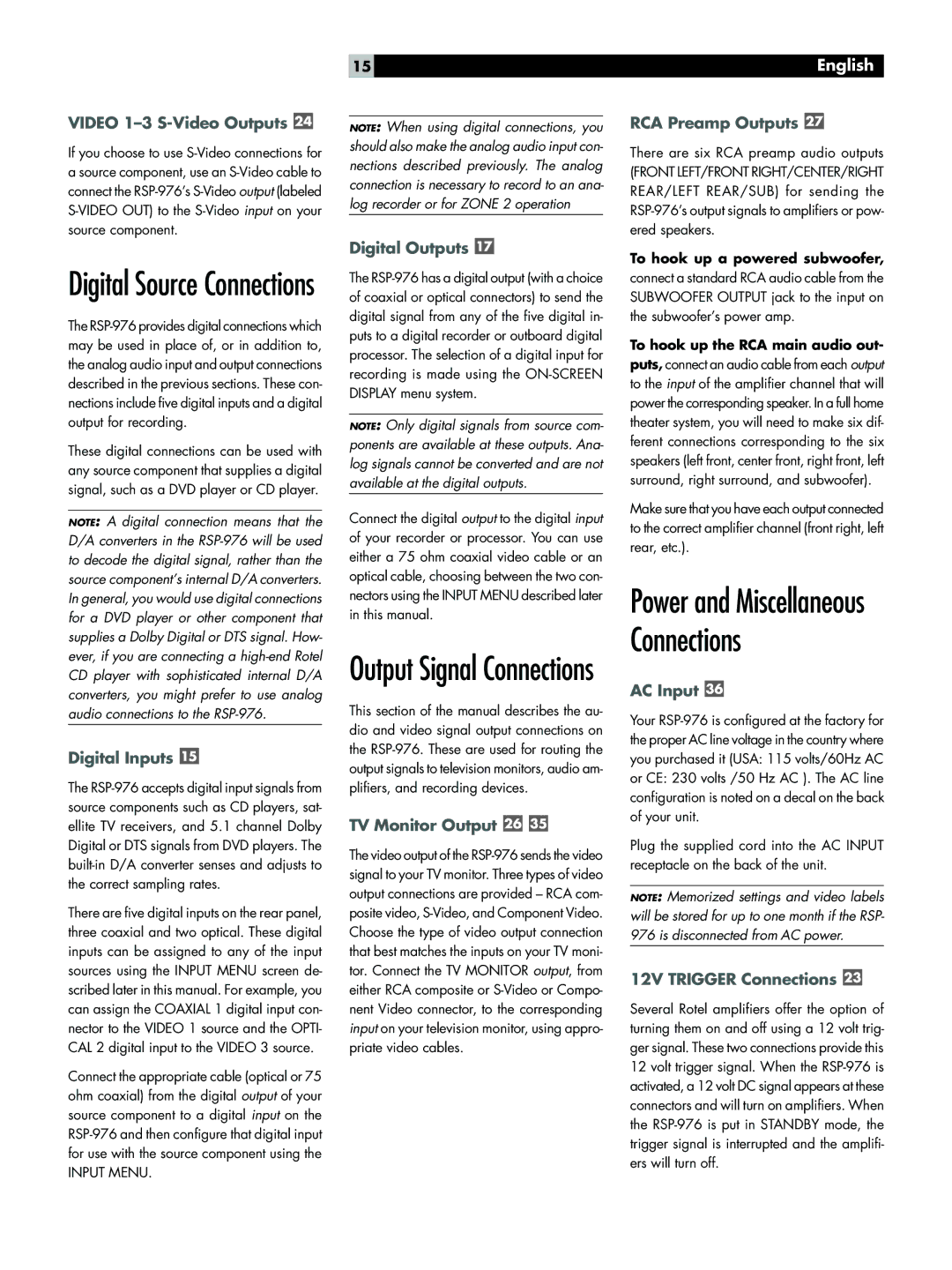RSP-976 specifications
The Rotel RSP-976 is a sophisticated home theater processor that has garnered attention among audiophiles and home cinema enthusiasts. Renowned for its impressive features and technologies, the RSP-976 aims to enhance the listening experience through an array of advanced capabilities.One of the standout attributes of the RSP-976 is its support for multi-channel audio formats. It boasts compatibility with Dolby Atmos, DTS:X, and other surround sound technologies, enabling users to immerse themselves in a three-dimensional soundstage. This engagement is further enriched by its discrete 7.1.4-channel processing, allowing for exceptional fidelity and clarity.
Another key feature of the Rotel RSP-976 is its advanced room correction software. The inclusion of Dirac Live room correction technology allows the processor to analyze the acoustic environment and optimize sound performance accordingly. This ensures that users can experience a balanced frequency response tailored to their specific listening space, mitigating issues related to reflections and room modes.
The RSP-976 also prioritizes connectivity and versatility. Equipped with multiple HDMI inputs that support 4K Ultra HD video with HDR, the processor can interface seamlessly with a wide range of video sources. Additional input options include various analog and digital connections, making it compatible with a variety of audio sources, from high-fidelity vinyl to streaming services.
For audiophiles, the RSP-976 features high-quality digital-to-analog converters, ensuring that audio playback is rich and free of distortion. Additionally, its robust headphone output caters to those who prefer a more personal listening experience without sacrificing sound quality.
The processor's user-friendly interface, driven by an intuitive remote control and a clearly laid-out menu system, adds to its appeal. Users can easily customize their audio settings and configurations, enhancing their overall experience.
In terms of build quality, the Rotel RSP-976 showcases a sturdy chassis that not only enhances durability but also minimizes electronic interference—a crucial aspect for achieving high-fidelity sound reproduction. Its sleek design aligns with modern aesthetics, making it a visually appealing addition to any home theater setup.
In summary, the Rotel RSP-976 is a standout home theater processor that combines advanced audio technologies with versatility and user-friendly features. With its superior sound processing, room calibration capabilities, and extensive connectivity options, it stands as an excellent choice for anyone looking to elevate their audio experience.

